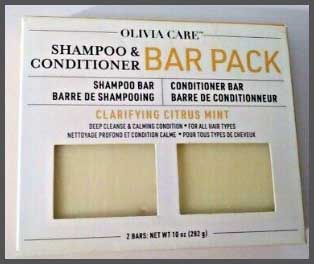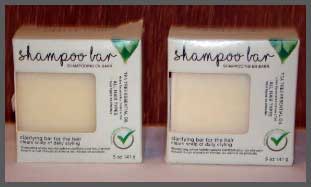When it comes to hair care, I’ve always been on the lookout for products that offer both convenience and quality. Recently, I came across Olivia Care shampoo bars and decided to give them a try.
You might be wondering, are these bars as effective as liquid shampoos? Are they worth the hype?
In this article, I’ll share my experience with Olivia Care shampoo bars, exploring their pros and cons, maintenance tips, and how they compare with other brands.
By the end, you’ll have a clear understanding of whether or not this product might fit into your hair care routine.
Why I Wouldn’t Recommend Olivia Care Shampoo Bars?
As someone who’s always eager to try new products and share honest reviews, I must admit that my experience with Olivia Care shampoo bars has been a mixed bag.
While they offer some appealing benefits, there are several reasons why I wouldn’t recommend them, especially if you’re looking for a seamless and satisfying hair care routine. Let’s break down these reasons in more detail:
- Prolonged Adjustment Period

One of the biggest drawbacks is the adjustment period.
When I first switched to Olivia Care shampoo bars, my hair went through a rough transition phase.
For several weeks, my hair felt waxy, heavy, and generally unclean.
This is a common issue with many shampoo bars, but it was particularly pronounced with this brand.
If you’re someone who values immediate results, this prolonged adjustment period can be frustrating and off-putting.
- Inconsistent Results
Consistency is key in any hair care routine, and unfortunately, Olivia Care shampoo bars didn’t deliver in this area. Some days my hair felt light, clean, and manageable, but on other days it was greasy and weighed down.
This inconsistency made it hard to rely on the product for everyday use. The unpredictability can be a deal-breaker, especially if you need your hair to look its best for work or social events.
- Lathering Issues
Getting a good lather is crucial for effectively cleaning your hair. I found that Olivia Care shampoo bars struggled in this department. Unlike liquid shampoos that foam up easily, these bars required a lot more effort to produce enough lather.
This not only made the washing process longer but also left me feeling like I wasn’t using enough product, leading to more frequent washes and faster depletion of the bar.
- Storage Challenges
Proper storage of shampoo bars is essential to maintain their integrity, and this was a significant issue for me. The Olivia Care bars tend to become mushy if not stored correctly, which can make them less effective over time.
Despite using a soap dish with drainage, I still found that the bars would often end up in a semi-liquid state, which was messy and inconvenient. If you don’t have an ideal storage solution, you might face similar frustrations.
- Unsuitable for All Hair Types
Another critical point is that Olivia Care shampoo bars may not be suitable for all hair types. While they might work for some, others, including myself, found them less effective.
If you have particularly thick, curly, or color-treated hair, these bars might not provide the moisture and care that your hair needs. The one-size-fits-all approach doesn’t quite work here, making it a less appealing option for a diverse range of users.
- Price Vs. Performance
When comparing the cost to performance ratio, Olivia Care shampoo bars fall short. They are priced competitively, but considering the issues with lathering, storage, and inconsistency, I didn’t feel they offered good value for money.
In contrast, other brands like Lush or Ethique, though more expensive, provided a more reliable and satisfying experience, making them worth the extra investment.
Pros of Olivia Care Shampoo Bars
Yes, it’s not all that bad. Just because I didn’t like it that does not mean nobody likes it. Here are some features of Olivia Care shampoo bars people like:

- Eco-Friendly Packaging
- One of the biggest draws is the minimalistic, plastic-free packaging. If you’re trying to reduce your carbon footprint, this is a significant advantage.
- Travel-Friendly
- These bars are compact and easy to carry, making them perfect for travel. No more worrying about liquid restrictions at the airport.
- Natural Ingredients
- Olivia Care prides itself on using natural ingredients, which is a big plus for those of us trying to avoid harsh chemicals.
- Pleasant Scents
- The bars come in various scents, and I found them to be quite pleasant without being overpowering.
Cons of Olivia Care Shampoo Bars
- Initial Transition Period
- There’s definitely an adjustment period. My hair felt waxy and heavy for the first few weeks, which was frustrating.
- Lathering Issues
- Getting a good lather was more challenging compared to liquid shampoos. It often felt like I wasn’t using enough product, leading to more frequent washing.
- Storage Challenges
- Keeping the bar dry between uses can be tricky. If not stored properly, it can become mushy and less effective.
- Variable Effectiveness
- Results seemed inconsistent. Some days my hair felt clean and light, while other days it felt greasy and unmanageable.
Tips For Using Olivia Care Shampoo Bar
Maintaining your Olivia Care shampoo bar properly is crucial to getting the most out of it. Here are some tips I’ve found useful:
- Proper Storage
- Keep your bar dry. Use a soap dish with drainage to prevent it from sitting in water, which can make it disintegrate faster.
- Cut the Bar
- Consider cutting the bar into smaller pieces. This not only helps with handling but also ensures the whole bar doesn’t get wet at once.
- Application Technique
- Rub the bar between your hands to create a lather before applying it to your hair. This can help you gauge the right amount of product to use.
- Rinse Thoroughly
- Make sure to rinse your hair thoroughly. Any residue left behind can make your hair feel greasy.
Comparison With Other Brands
When it comes to shampoo bars, Olivia Care isn’t the only player in the game. Here’s how it stacks up against some other popular brands:
- Lush Shampoo Bars
- Pros: Lush bars tend to lather more easily and offer a wide range of formulations for different hair types.
- Cons: They are more expensive, and some users find the scents too strong.
- Ethique Shampoo Bars
- Pros: Known for their effectiveness and long-lasting nature. They also offer bars tailored to specific hair needs.
- Cons: They are also pricier and can be harder to find in local stores.
- HiBAR Shampoo Bars
- Pros: These bars are ergonomically designed, making them easier to hold and use. They also focus on maintaining a balanced pH for your hair.
- Cons: Limited scent options and can be more expensive than Olivia Care.
Frequently Asked Questions (FAQ)
Shampoo bars, like those from Olivia Care, often use natural ingredients which can be healthier for your hair compared to some liquid shampoos with harsh chemicals. However, individual results can vary, and some may find the transition period challenging.
Shampoo bars can sometimes make your hair feel stripped during the initial weeks of use. This is usually due to the absence of the chemicals your hair has become accustomed to in liquid shampoos. Over time, your hair should adjust.
They can last longer if stored properly. Keeping them dry between uses is key to extending their lifespan. On average, one bar can last as long as two to three bottles of liquid shampoo.
The transition period can vary from a few weeks to a couple of months. Your hair needs time to adjust to the new product, so patience is essential.
Final Thoughts
In the end, whether Olivia Care shampoo bars are right for you depends on your priorities and hair type. They certainly offer eco-friendly benefits and pleasant scents but come with some challenges that you should be prepared for.
If you’re willing to navigate the adjustment period and maintenance, you might find them to be a worthwhile addition to your hair care routine. For those who prefer a more straightforward, hassle-free option, sticking with liquid shampoos or exploring other brands might be the better choice.
Your hair care journey is unique, and finding the right product is all about trial and error.
